Whether it’s the sites that let visitors experience the region’s difficult and inspiring past or the exciting places that focus on its diverse and forward-looking contemporary culture, the South is a memorable meeting and travel destination. The region is home to a wide range of attractions to suit just about every kind of interest, along with a variety of meeting and lodging accommodations. And of course it’s all served up with that famous Southern hospitality. Here‘s a sampling of what the region has to offer its guests.
ALABAMA
One of Alabama’s top attractions, the U.S. Space and Rocket Center, is found in Huntsville, where another point of interest, the Imhotep Art Gallery, showcases the works of Black artists. History comes alive in Mobile, where costumed guides depict 18th century life at the restored Fort Conde, which now serves as the city’s Visitors Center. Mobile is also home to the National African American Archives & Museum. Gulf Shores, another popular coastal destination, is currently working on a major renovation of its Gulf State Park, which has facilities for picnicking, fishing, golf other outdoor activities.
Tuscaloosa, best known as the home of the University of Alabama’s famed Crimson Tide football team, is also the site of the Murphy African-American Museum and the Alabama Museum of Natural History. A storied African-American university is found in Tuskegee, where the campus-based Kellogg Hotel and Conference Center can accommodate small groups and the National Tuskegee Airmen Museum is a major historical attraction.
 BIRMINGHAM
BIRMINGHAM
Alabama’s largest city boasts an impressive list of cultural, recreational and entertainment attractions, many of which open after hours to groups holding special events. The McWane Science Center, Barber Village Motorsports Museum, Birmingham Museum of Art, Birmingham Zoo, Birmingham Botanical Gardens and Alys Robins Stephens Performing Arts Center all offer event space. Other interesting off-site venues include the Sloth Furnaces National Historic Landmark, once an ironworks plant, now an industrial museum; the WorkPlay Theater, part of the WorkPlay entertainment complex on the city’s south side; and Harambe, a loft setting filled with African art.
Birmingham’s largest meeting venue, the Jefferson Convention Complex, contains 220,000 sq. ft. of exhibit space, 60 meeting rooms, and a 10-story Medical Forum. There are 14,000 area guestrooms.
Groups choosing Birmingham as a gathering spot will find plenty of diversions between meeting sessions. Five Points South, the historic entertainment district noted for its eclectic architectural mix, features restaurants, bars, shops and a theater. Other attractions include Alabama Adventure, the state’s first amusement park; the Southern Museum of Flight, located near Birmingham International Airport; the Oxmoor Valley Golf Course, part of the state-wide Robert Trent Jones Golf Trail; and Oak Mountain State Park, located about 20 minutes from downtown Birmingham.
Of course, one of the city’s most outstanding attractions is the six-block Birmingham Civil Rights District, which includes the Sixteenth Street Baptist Church, site of the 1963 bombing that killed four young girls; Kelly Ingram Park, whose sculptures commemorate the civil rights demonstrations that took place there; and the Birmingham Civil Rights Institute. The Civil Rights District also is home the Alabama Jazz Hall of Fame, located inside the historic Carver Theatre for the Performing Arts; the Fourth Avenue Business District; Alabama Penny Savings Bank, the state’s first Black-owned bank; and A.G. Gaston Gardens, a former motel and civil rights meeting space.
MONTGOMERY
Alabama’s capital is a key destination on the state’s Black Heritage
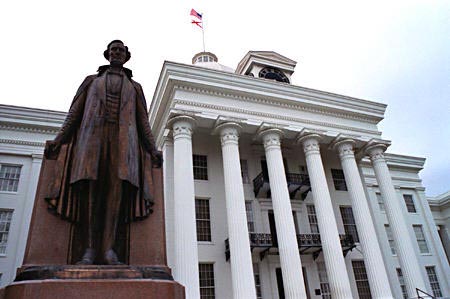
Trail, which extends from Selma through Lowndes County to Montgomery and from Montgomery to Tuskegee. A Civil Rights audio tour created by Alabama Public Television features several local landmarks, including the spectacular Civil Rights Memorial, Dexter Avenue King Memorial Baptist Church (where the Rev. Martin Luther King, Jr. was pastor) the Parsonage Museum in the King family home, and the Rosa Parks Library and Museum.
The Governor’s Mansion and Union Station — which houses the Visitor Center and Depot Gift Shop — are two of Montgomery’s most notable architectural landmarks. Local cultural attractions include the Montgomery Museum of Fine Arts in Blount Park, which hosts the famed Alabama Shakespeare Festival, and the F. Scott and Zelda Fitzgerald Museum. The city’s largest meeting venue is the Montgomery Convention Center, with 73,000 sq. ft. of exhibit space and a 1,800-events performing arts theater. The center is connected to the Renaissance Montgomery Hotel & Spa, which offers another 25,000 sq. ft. of meeting space and a 14,000-sq.ft. ballroom. The recent $29 million convention center expansion is part of a major development of the downtown riverfront that also includes the Riverwalk Amphitheater and the Riverwalk Stadium.
ARKANSAS
Outdoor enthusiasts should find plenty to keep them occupied in Arkansas, which is nicknamed The Nature State. Among the natural treasures helping it earn that moniker are 250 scenic hiking trails, more than 600,000 acres of lakes and three national forests covering more than 2.9 million acres.
Pine Bluff, located in the state’s Timberlands region, draws thousands to its Smoke on the Water barbecue and music festival each September, while the Arkansas Entertainers Hall of Fame, the Southeast Arkansas Arts and Science Center, the Arkansas Railroad Museum and the Harbor Oaks Golf Course provide year-round visitor appeal.
Hot Springs is Arkansas’ most popular destination, with visitors flocking to Hot Springs National Park and a host of cultural and entertainment attractions. The park’s visitor center is located in one of its historic bath houses. Other places to see include Magic Springs theme park, the Gangster Museum of America, the Mid-American Science Museum and Garvan Woodland Gardens.
 LITTLE ROCK
LITTLE ROCK
If Little Rock’s Villla Marre looks familiar to some visitors, it’s because the historic home was used as the exterior of the design shop portrayed on the television show “Designing Women.” A lesser-known yet significant city landmark is the Big Dam Bridge, which is the world’s longest bridge created specifically for pedestrian and bicycle traffic. One of the most important local landmarks is the Central High School National Historic Site, where a major U.S. school desegregation case began. The Little Rock Nine Memorial, dedicated to the students involved in the case, is located on the grounds of the State Capitol.
FLORIDA
The Sunshine State shines a light on its African-American heritage in a host of attractions, from Tallahassee’s historically Black Florida A& M University to Amelia Island’s American Beach, the state’s first resort for African-Americans. Adventure seekers can enjoy snorkeling in Citrus County or kayaking, fishing and Scuba diving in the Florida Keys. Art lovers can browse the Boca Raton Museum of Art, the Museum of Fine Art in the St. Petersburg/Clearwater area; the Osceola Center for the Arts in Kissimmee or the Ringling Museum of Art in Sarasota. History buffs can visit the neighboring winter estates of Thomas Edison and Henry Ford in Fort Myers and Palm Beach’s oldest home, Sea Gull Cottage, or explore St. Augustine, Ponte Vedra & the Beaches, which boasts the nation’s oldest continually occupied settlement. One of Florida’s top family-friendly attractions is the Kennedy Space Center, located in the Cocoa Beach area that is part of the state’s Space Coast region.
DAYTONA BEACH
Visitors to Daytona Beach can tour the campus of Bethune-Cookman

University, where the Mary McLeod Bethune Home & Gravesite preserves the memory of the educational and political leader who founded the historically Black institution. Along with its beaches, Daytona is probably best known for its auto racing. You can watch the pros zoom around the track or enjoy your own simulated thrill ride at the Daytona 500 Experience IMAX Theater.
Situated just 400 ft. from the Atlantic Ocean, Daytona’s Ocean Center convention, entertainment and sports complex offers 205,536 sq. ft. of meeting and exhibit space, with 1,200 guestrooms nearby.
 FORT LAUDERDALE
FORT LAUDERDALE
One of Fort Lauderdale’s newest attractions, the Village at Gulfstream Park, opened in February 2010. Located near the Gulfstream Park Racetrack and Casino, this shopping and dining venue is home to entertainment hot spots like the Santanera and Greenhouse nightclubs. Travelers to Fort Lauderdale from June through August can take a tour to view some of Florida’s rare, dinosaur-like turtle species on the beach. Other nature-themed attractions include Butterfly World, the largest butterfly aviary in North America; the Flamingo Gardens &Wray Botanical Collection; the Annie Kolb Nature Center, where you can go kayaking beneath the mangrove trees. A day trip to explore the Florida Everglades is another option.
Local Black heritage is the focus of the African American Research Library and Cultural Center, the Old Dillard Museum and the Ashanti Cultural Arts Center. Several major cultural attractions are located in the Riverwalk Arts & Entertainment District, home to the Broward Center for the Performing Arts, the Museum of Discovery & Science, the Florida Grand Opera, Historic Second Street, the Museum of Art Fort Lauderdale and the historic Stanahan House. The Greater Fort Lauderdale/Broward County Convention Center is located on the Intracoastal Waterway that lends the city its nickname, the “Venice of America.” With a total of 600,000 sq. ft. on three levels, the facility contains the 1,300-sq.ft. Executive Teleconference Suite, two large ballrooms and nearly 200,000 sq. ft. of exhibit space. The convention center has implemented recycling, energy efficiency, water conservation and other programs fostering sustainability, while the Greater Fort Lauderdale Convention & Visitors Bureau has produced a guide for planning green conventions.
The more than 33,000 area guestrooms include over 3,500 rooms within a mile of the convention center. Upwards of 30 local properties have earned the Florida Green Lodging certificate from the Florida Department of Environmental Protection.
JACKSONVILLE
Jacksonville’s Olustee Battlefield Monumen

t is located at the site where the all-Black Massachusetts 54th regiment fought for the Union in the Civil War. Another Black heritage attraction, a marker at the birthplace of poet and lyricist James Weldon Johnson, honors one of the city’s most famous sons.
On the campus of the historically Black Edward Waters College, Centennial Hall houses a collection of African art. Other displays of the visual arts can be found at the Museum of Contemporary Art Jacksonville, the Cummer Museum of Art & Gardens. Jacksonville’s Osborne Convention Center offers 160,000 sq. ft. of meeting space.
 GREATER MIAMI
GREATER MIAMI
Conventioneers traveling with kids should note that Miami has some brand new family-friendly attractions. Jungle Island’s new “Lemur Experience” lets small groups have a close-up encounter with the rare primates that inhabit the park’s Lemur Nursery. The Miami Children’s Museum, which debuted its new $1 million, Wizard of Oz educational exhibit in January 2010, also features a new Kaboom! Playground and Waterwise exhibit. A new annual event, the Miami Music Festival, had its inaugural last December. Some of the city’s long-standing events spotlight its Black heritage, including the Miami-Bahamas Goombay Festival and the Kwanzaa Kuumba Art Fest.
Among the places where local Black history and culture can be explored are the Lyric Theater, the Chapman House and the D.A. Dorsey House — home of the city’s first Black millionaire — in Overtown and the African Heritage Cultural Arts Center in Liberty City. The Miami Beach Convention Center, located in the historic Art Deco District, contains more than 500,000 sq. ft. of divisible exhibit space in a prime location near the beach. The area’s other major meeting venue, the Miami Convention Center, offers 34 meeting rooms and a capacity for groups of up to 5,000. There are nearly 50,000 hotel rooms in the Greater Miami area.
ORLANDO
Orlando boasts the second largest convention
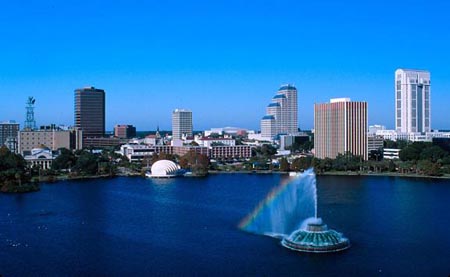
center in the United States. Encompassing 7 million sq. ft., the Orange County Convention Center, contains 2.1 million sq. ft. of exhibit space, with two 92,000-sq. ft. general assembly areas, 74 meeting rooms, a 160-seat lecture hall and a 62,000-sq. ft. multi-purpose room. Along with high-speed Internet access throughout the facility, it offers meeting groups the ability to create customized Local Area Networks, Wide Area Networks and Virtual Private Networks. The convention center has also instituted a recycling program and has a solar energy project in development.
Area conference hotels offer another 3.1 million sq. ft. of meeting and exhibit space. Nearly 450 area hotels provide a combined 113,000 guestrooms, with more than 7,600 of them within walking distance of the convention center. Several local hotels are participants in the Florida Green Lodging Program.
Orlando’s top visitor attractions also serve as convention venues. Disney World offers a combined 600,000 sq. ft. of meeting space, and there is 133,000 sq. ft. of space available at the Universal Orlando Resort. Some of the newest attractions at the theme parks include Toy Story Mania, the Block Party Bash and The American Idol Experience at Disney World and a new ride based on The Simpsons television show at Universal.
Orlando’s historic Wells’ Built Hotel provided lodging for many famous African-American musicians during the 1920s. A drive to nearby Eatonville, the oldest African-American municipality in the United States, offers a chance to visit the Zora Neale Hurston National Museum of Fine Arts, named for the Harlem Renaissance writer and folklorist who was the town’s most famous native daughter. Other places to see include the Orlando Science Center; Busch Gardens Africa; and SeaWorld, where a new simulation ride called Manta lets visitors experience how it feels to be a stingray.
 PENSACOLA
PENSACOLA
A trolley tour is a great way to get an introduction to the history of this Gulf Coast destination, with stops at Historic Pensacola Village Seville Square, the Port of Pensacola and NAS Pensacola, the first U.S. naval air station. Two notable African-American heritage sites located in the historic village are the Kate Coulson House, headquarters for the African-American Heritage Society, which operates a small art gallery and museum in the building, and the Julee Panton Cottage, the early 19th century home of a free woman of color.
The National Naval Aviation Museum will showcase several events in 2011 in honor of the 100th anniversary of naval aviation. Annual special events in the city include the Jamaican Fest in September and the Great Gulfcoast Arts Festival in November. Tuesdays are weekly special events at the Pensacola Museum of Art, when admission is free. Along with its beaches, the Pensacola area offers such outdoor recreational and sightseeing attractions as the Edward Ball Nature Trail at the University of West Florida, Bay Bluff Park and Chappie James Memorial Gardens, named for the Pensacola native who was the first Black four-star general in the U.S. Air Force.
The city’s premiere meeting venue is the Pensacola Civic Center.
TAMPA
The Tampa
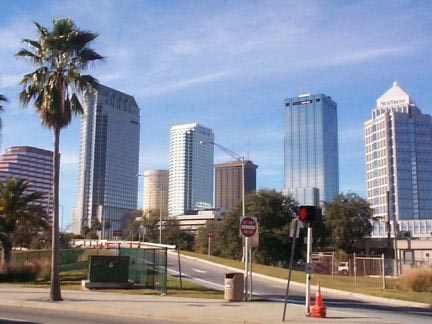
Museum of Art’s new downtown digs at Curtis Hixon Waterfront Park, includes the 66.000-sq.ft. Cornelia Corbett Center, an impressive architectural specimen clad in pierced aluminum and topped with a translucent ceiling. The city’s list of cultural attractions also includes the Tampa Bay History Center, which showcases 12,000 years of local history; the David A. Straz Center for Performing Arts; and the Henry B. Plant Museum at the University of Tampa, which focuses on the history of the Tampa Bay Hotel and the Gilded Age.
Family-friend attractions abound in Tampa, from Busch Gardens Tampa Bay and the Lowry Park Zoo to the Museum of Science and Industry and the Florida Aquarium, where more than 10,000 aquatic plants and animals reside. Just east of Tampa you’ll find the largest dinosaur attraction: Plant City’s Dinosaur World. Local shopping, dining and entertainment hubs include Ybor City, the Latin American neighborhood that is home to the new 210,000-sq. ft. shopping and entertainment complex called Centro Ybor, and Channelside Bay Plaza, which is situated on the downtown waterfront next to the aquarium. The largest area meeting venue is the Tampa Convention Center, which contains 200,000 sq. ft. of exhibit space and a 36,000-sq. ft. ballroom.
GEORGIA
The Lucy Craft Laney Museum of Black History in Augusta, the Tubman African-American Museum in Macon, the Albany Civil Rights Movement Museum, the Ralph Mark Gilbert Civil Rights Museum in Savannah and the home of blues legend Ma Rainey in Columbus are just a few of the attractions in Georgia that highlight the area’s Black heritage.
The Columbus Museum is the state’s oldest repository of art and history exhibits. Other notable historical and cultural attractions include the Peach State Summer Theatre — Georgia’s official musical theater — in Valdosta, the Old Town National Register District in Brunswick and the nation’s largest Hindu Temple, located in Gwinnett County. The Atlanta suburb of Decatur is the gateway to the Georgia’s biggest recreational attraction, Stone Mountain Park. On Jekyll Island, a recreational retreat in the Atlantic coastal area that includes Brunswick and the Golden Isles, meeting groups can book space in the 55,000-sq. ft. Jekyll Island Convention Center.
 ATLANTA
ATLANTA
The state’s newest convention facility is now open for business in Greater Atlanta. Sporting a contemporary design, the 400,000-sq. ft. Georgia International Convention Center in College Park encompasses 150,000 sq. ft. of exhibit space, a 94,009 sq. ft. lobby and registration concourse, 16,000 sq. ft. of meeting space, a 42,000-sq. ft. pre-function area and a 40,000-sq. ft. ballroom, the largest in the state.
Special features include a Green Room with a custom-made conference table, a 9,800-sq. ft. Culinary Arts Center with a VIP tasting room and a full-service carpentry shop. Technical capacities include private Local Area Networks, high-speed, fiber-optic Internet access throughout the facility and WiFi. There are more than 8,000 guestrooms near the convention center, while a new 403-room Marriott Hotel a 147-room SpringHill Suites hotel will be added to the area in mid-2010. Just two minutes from the airport via the ATL SkyTrain, the GICC is the only U.S. convention center directly connected to a major airport.
The new Center for Civil and Human Rights, set to open in 2012, will house the Morehouse College Martin Luther King, Jr. Collection, along with interactive audio and video exhibits. The center will have Centennial Olympic Park, the New World of Coca-Cola and the Georgia Aquarium as its neighbors. Atlanta’s most famous Black heritage attraction is the Martin Luther King, Jr. National Historic Site. Located in the Sweet Auburn district, the site includes King’s birth home, Ebenezer Baptist Church and the gravesites of King and his wife, Coretta.
The National Health Museum will soon be added to the list of attractions in downtown Atlanta. Meanwhile, the Jimmy Carter Presidential Library & Museum has undergone a $10 renovation, the National Museum of Patriotism has new home across from the Georgia Aquarium, and the Atlanta Botanical Garden has added a new LEED-certified visitor center and parking facility.
KENTUCKY
Sightseeing attractions in the Bluegrass State offer ample opportunity for touring, hiking, horseback riding and other adventures. Visitor’s to Bowling Green can take an underground boat tour of the Lost River Cave and Valley and check out the sleek and speedy exhibits at the National Corvette Museum, which has undergone a major expansion to add 47,000 sq. ft. more space, a ‘50s-themed restaurant and a 3,000-sq. ft. gift shop.
Lexington is now offering city tours in Double-decker buses and Sprocket Jockey pedicabs. Local points of interest include New Zion — a historic neighborhood founded by former slaves — the Mary Todd Lincoln House and the Exploirum of Lexington art and science museum. Covington’s Behringer-Crawford Museum, which showcases fine art and transportation artifacts, organizes an Underground Railroad tour. Another African-American heritage attraction can be found along the Covington-Newport Riverwalk, site of the James Brandley memorial honoring the only Black person admitted to a U.S. institution of higher learning before the Civil War.
LOUISVILLE
Louisville gets plenty of worldwide attention in May, when

Kentucky Derby and Kentucky Festival — which boasts the largest pyrotechnics show in North America — take place. But Kentucky’s largest city also has lots of other things to see and do year round. Visitors can tour Churchill Downs, where the Kentucky Derby Museum houses a permanent exhibit on the contribution of Black jockeys and trainers. Other attractions include Old Louisville, the Speed Museum, the Kentucky Museum of Art & Craft and the downtown dining and entertainment district known as Fourth Street Live! Louisville’s premier meeting venue is the 300,000-sq. ft. Kentucky International Convention Center.
LOUISIANA
One of America’s most unique cultural communities has its hub in the southwest Louisiana city of Lafayette. Along with several sites dedicated to preserving the area’s Acadian (or Cajun) heritage, visitors can tour the Rodrigue Studio, which features original artworks by the creator of the famed Blue Dog paintings.
Monroe’s Northeast Louisiana Delta African American Heritage Museum is part of the North Louisiana African American Heritage Trail, which also includes the Eddie G. Robinson Museum in Grambling and the Hermione Museum in Tallulah. In Natchitoches, the state’s oldest permanent settlement, a large collection of works by African-American folk artist Clementine Hunter are displayed at Melrose Plantation, while the Cane River Creole National Historical Park also spotlights some of the area’s African-American roots.
Shreveport’s Black heritage sites include the Southern University Museum of Art Shreveport and the Stephens African American Museum, while the city’s Multicultural Center of the South highlights the contributions of more than 20 ethnic groups.
 BATON ROUGE
BATON ROUGE
A host of attractions in Louisiana’s capital can serve as unique settings for meetings and receptions. Outside venues include BREC’s Baton Rouge Zoo, the 14-acre Hilltop Arboretum at Louisiana State University and the outdoor pavilion at Alligator Bayou. Other options include the Old State Capitol, the Old Governor’s Mansion, Louisiana State University Museum of Art, the Louisiana State Museum-Baton Rouge and the Louisiana Art & Science Museum, which is housed in a 1920s train depot. Several area plantations, such as Magnolia Mound and Nottoway, also have space for events, as does the
USS Kidd, docked on the banks of the Mississippi River.
The city’s largest meeting site, the 200,000-sq. ft Baton Rouge River Center, offers a new 70,000-sq. ft. exhibit hall, 125,000 sq. ft. of flat floor space, banquet facilities and several meeting rooms. The Arena and the Theatre for the Performing Arts are also part of the facility. For lodging, there are more than 9,000 area guestrooms. The current 34-story, 450-ft.-high Art Deco-style State Capitol is the nation’s tallest capital building. Its observation deck provides a great view of the city and the Mississippi River below, while the front lobby displays a bust of P.B.S. Pinchback, the nation’s first Black governor.
Baton Rouge is home to the main campus of America’s largest historically Black university. A tour of Southern University includes stops at Memorial Union, Jaguar Cage — where the university’s mascot resides — and the Southern University Museum of Art. Two more Black heritage attractions in the area are the Odell S. Williams African American History Museum and the River Road African-American Museum in nearby Donaldsonville. LSU’s Rural Life Museum & Windrush Garden is another notable attraction, displaying slave cabins and a blacksmith’s shop among other exhibits. Visitors to the site can watch live demonstrations of blacksmithing, candle making, soap making and other crafts.
NEW ORLEANS
Fans of the new HBO series “Treme” can visit the real place that

inspired it when they visit New Orleans. Faubourg Treme is the nation’s oldest African-American neighborhood, where two notable architectural landmarks are St. Augustine Catholic Church and the historic home that now holds the New Orleans African American Museum. Other local cultural attractions include the New Orleans Museum of Art, the Ogden Museum of Southern Art, the National World War II Museum and the Southern Food and Beverage Museum. New Orleans’ Ernest N. Morial Convention Center contains more than 1.1 million sq. ft. of contiguous exhibit space and 140 meeting rooms.
MISSISSIPPI
The African American Heritage driving tour in Columbus, part of Mississippi’s northwestern Pine Region, includes Sanfield Cemetery and the historically Black business district known as Catfish Alley Catfish Alley. Gulfport offers such diversions as the Island View Casino Resort, the CEC & Seabee Memorial Museum, the Lynn Meadows Discovery Center and swimming and dolphin watching on Ship Island.
Travelers to Tunica can enjoy casino gaming, cruising the Mississippi aboard the Tunica Queen and visiting historic attractions like the Tate Long Cabin. The Tunica Arena & Exposition Center offers meeting and event space. Tupelo’s attractions include the African American Historic and Cultural Society Museum & Gallery, the Elvis Presley Memorial Museum, the GumTree Museum of Art and hiking and biking along the picturesque Natchez Trace.
Vicksburg is home to Mississippi’s oldest African Methodist Episcopal Church, as well as the Jacqueline House African-American Museum. Historic mansions like Ahern’s Belle of the Bends and Annabelle are open for tours.
 JACKSON
JACKSON
Jackson offers a wide range of off-site event venues, from historical and cultural attractions like the Dupree House & Mamie’s Cottage, Mississippi Museum of Art and New Stage Theatre to sports and concert arenas like the Mississippi Fairgrounds Complex and Mississippi Veterans Memorial Stadium. Meeting accommodations for large groups are available at the Jackson Convention Complex, which encompasses the 246,000-sq. ft. Convention Center with its 30,000-sq. ft. banquet hall, 60,000-sq. ft. exhibit hall and 33,000-sq. ft. registration lobby, as well as a business center and a 382-seat theater. The convention center is located next to the 74,000-sq. ft. Mississippi TelCom Center. Lodging accommodations include 5,500 guestrooms citywide.
Black heritage attractions are abundant in Mississippi’s capital and largest city. Once the hub of Black business and culture in Jackson, the Farish Street Historical District is the site of Ace Records, the Alamo Theater, Farish Street Baptist Church, the Smith Robertson Museum and Cultural Center and Birdland — the live music venue where Ellington, Hampton, Armstrong and other jazz legends performed when it was known as the Crystal Palace Night Club. The Trumpet Records studio on Farish Street is part of the Mississippi Blues Trail, while another trail marker is at the Summers Hotel, which years ago housed the legendary Subway Lounge in its basement. The historic blues, R&B and gospel music company Malaco records offers tours, and there is more music to explore at the Mississippi Musicians Hall of Fame in Jackson/Evers International Airport.
America’s first permanent civil rights exhibit is housed in the Old Capitol Museum. Other places to explore the area’s African-American history and culture include the Medgar Evers Home Museum, the Margaret Walker Alexander National African-American Research Center, Jackson State University and Tougaloo College — whose campus includes the Boddie Mansion, one of the few homes in Jackson to survive the Civil War.
NATCHEZ
One of the newest markers on the Mississippi Blues Trail is the one
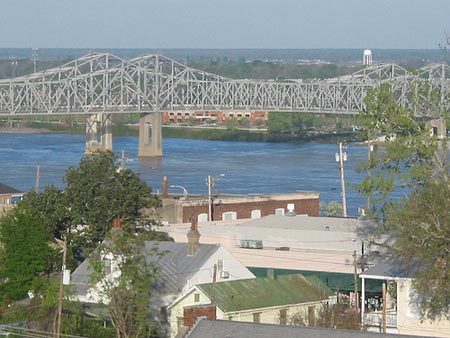
in Natchez’s Jack Waite Park honoring African-American harmonica player Alexander “Papa George” Lightfoot. The Natchez Association for the Preservation of Afro-American Culture operates the NAPAC Museum, a facility dedicated to preserving local Black heritage. Two historic homes that are part of Natchez National Park also have an African-American heritage connection. The 133-acre Melrose estate was built by slaves and free Black men, while the William Johnson House was the home of a former slave who became a prominent local businessman and slave owner himself.
Several local sites are dedicated to preserving the area’s Native American heritage. The Grand Village of the Natchez Indians, where admission is free, features a reconstructed Natchez Indian house, three ceremonial mounds, a nature tail and a gift shop that sells Native American crafts. Some of the city’s historic homes, including Dunleith and Manmouth Plantation, offer space for receptions and other group events. Many of the homes are open to tours during the city’s popular spring and fall pilgrimages. The Natchez Convention Center Complex, located in the historic district, contains nearly 30,000 sq. ft. of function space on two levels.
NORTH CAROLINA
Flanked by the Great Smoky Mountains and the Atlantic Ocean, North Carolina is home to a number of interesting recreational, sightseeing, historical and cultural attractions. Black heritage sites include the Rosetta C. Baldwin African-American Museum in High Point, best known for its furniture industry, and the art museum at North Carolina Central University in Durham. Raleigh is the site of the African American Cultural Complex and the Dr. Martin Luther King Jr. Memorial Gardens.
Just north of Raleigh, Vance County’s Henderson Institute Historical Museum is housed in what was once the county’s only high school for Black students. One of the most notable historical attractions in Winston-Salem, the Old Salem Museums & Gardens, recreates a 19th century Moravian community. Fayetteville, home to the U.S. Army’s Fort Bragg, spotlights military history at the Airborne & Special Operations Museum. Asheville offers tours of the historic Biltmore Estate, as well as close proximity to Great Smoky Mountains National Park.
 CHARLOTTE
CHARLOTTE
North Carolina’s largest city is home to a wide variety of cultural and entertainment attractions, including some that are one of a kind. The Afro-American Cultural Center, which presents a host of art programs, offers space for meetings and receptions on its rooftop terrace. The Mint Museum of Art, the state’s first art museum, is housed in a former branch of the United States Mint. Discovery Place, a hands-on science and technology museum in Center City, has a rain forest among its exhibits. There’s also “green” space inside the Charlotte Convention Center, which has instituted recycling, energy conservation and other sustainability efforts.
GREENSBORO
Just in time to commemorate the 50th anniversary of the sit-in mo
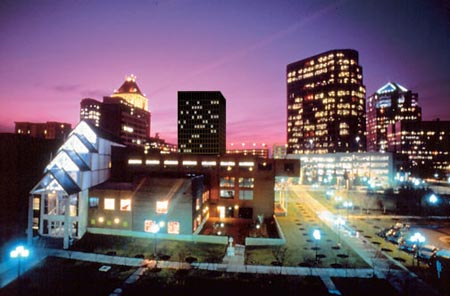
vement, the International Civil Rights Center & Museum had its grand opening in Greensboro on February 1, 2010. The facility’s main attraction is the Woolworth’s lunch counter and stools where four North Carolina A&T students staged their famous 1960s protest. Housed in the original Woolworth’s store, the 43,000-sq. ft. museum was designed by the Freelon Group, which is also the architectural firm for the Smithsonian’s planned National Museum of African American History and Culture in Washington, DC.
Greensboro already was home to a number of other Black heritage attractions, including the Charlotte Hawkins Brown Museum at Historic Palmer Institute, located at the site of the preparatory school for African-Americans that Brown founded in 1902; the African-American Atelier, one of four art galleries at the Greensboro Cultural Center at Festival Park; and Guilford College, the former location of a shelter for escaped slaves.
The Guilford Courthouse National Military Park, Castle McCulloch and Mendenhall Plantation are a few more places to explore local history. As the city’s largest meeting space, the Sheraton Greensboro Hotel & Koury Convention Center offers 250,000 sq. ft. of meeting space and a business center along with its 1,106 guestrooms.
SOUTH CAROLINA
South Carolina’s captivating Low Country Region includes Beaufort, a town on Port Royal Island that has been named a National Historic District. Charleston, a city well-known for its historic charm, now offers meeting and event space in the new Founders Hall at the Charles Town Landing State Historic Site. The Greenville Cultural Exchange Center highlights the African-American heritage of northwest South Carolina, while one of Greenville’s newest attractions is the Children’s Museum of the Upstate.
On Hilton Head Island, another Low Country destination and popular resort area, visitors can take an African-American Gullah heritage tour and explore the Coastal Discovery Museum. Myrtle Beach, situated at the northern end of part of the state’s Atlantic Coast, recently completed the first phase of its Oceanfront Boardwalk and Promenade.
Another destination in the northeast region, the Olde English District, is home to the Dizzy Gillespie Birthpark and the Southern African American Heritage Center, both located in Cheraw.
 COLUMBIA
COLUMBIA
One of Columbia’s African-American heritage sites has a fascinating story behind it. The Mann-Simons Cottage was the home of Celia Mann, a slave who walked from Charleston to Columbia after gaining her freedom. Another point of interest is the African American History Monument on the grounds of the South Carolina State House.
Local cultural and entertainment attractions include the EdVenture children’s museum; the Big Apple, a synagogue-turned-dance club; and City Art Gallery, which can host after-hours events. The 142,500-sq. ft. Columbia Metropolitan Convention Center is the city’s largest meeting venue, while other options include the Columbia Conference Center and the Saluda Shoals River Center.
TENNESSEE
An African-American heritage attraction honoring one of the Tennessee’s most famous authors is the Alex Haley Museum in Henning, a tiny town in the western region north of Memphis. Middle Tennessee is known for its whiskey distilleries and breeding of the unique Tennessee Walking Horse. Visitors can explore that heritage at sites like the Tennessee Walking Horse Museum and the Jack Daniels Distillery in Lynchburg.
One of the top destinations in the eastern region is Gatlinburg, a gateway to Great Smoky Mountains that has many notable recreational and cultural attractions. The list includes the Ober Gatlinburg Ski Resort & Amusement Park, Appalachian National Scenic Trail, the Great Smoky Mountain Arts & Crafts Community and Ripley’s Aquarium of the Smokies. The Gatlinburg Convention Center offers more than 148,000 sq. ft. of meeting and exhibit space. Neighboring Pigeon Forge is home to the Dollywood theme park, which is celebrating its 25th anniversary this year.
CHATTANOOGA
America’s oldest and largest military park is Chattanooga
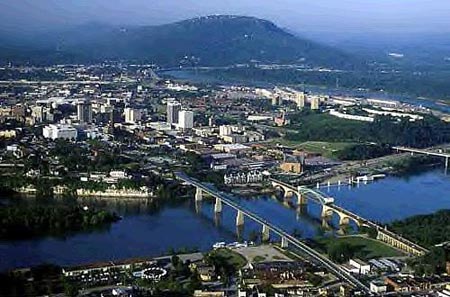
’s Chickamauga and Chattanooga National Military Park. There’s more local history on tap at the Chattanooga African-American Museum, where the Bessie Smith Performance Hall space for meetings, receptions and other events, and the museum’s Vilma Fields Atrium can hold small gatherings. Sightseeing attractions are a big draw in this mountainous destination. A visit to Lookout Mountain offers a chance to ride the world’s steepest passenger railway and glimpse the 145-ft.-high Ruby Falls. A stroll along the Walnut Street Bridge, the longest pedestrian bridge in the world, offers more great views.
For an indoor encounter with nature, you can visit the Tennessee Aquarium — the world’s largest freshwater aquarium — where the themed exhibits include Appalachian Cove; the Discover Hall Gallery, featuring displays related to the Ohio River; the Delta Country Gallery, highlighting the Mississippi River environment; and the Secret Reef exhibit on the Gulf of Mexico. Art lovers can browse the Hunter Museum of American Art while enjoying its picturesque setting on a 90-ft. limestone bluff overlooking the Tennessee River.
Getting to downtown attractions is easy and green with Chattanooga’s free zero-emission electric shuttle system, and the 185,000-sq. ft. Chattanooga Convention Center has undertaken several sustainability initiatives.
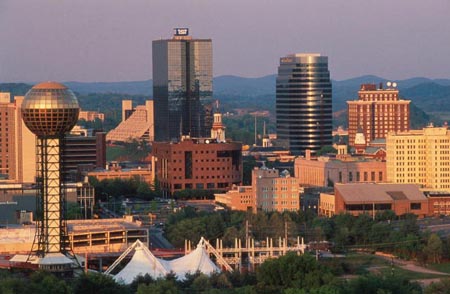 KNOXVILLE
KNOXVILLE
Fitness-minded visitors to Knoxville can now rent bicycles at Volunteer Landing for exploring the city on two wheels. Situated on the banks of the Tennessee River, Volunteer Landing is one of Knoxville’s shopping, dining and entertainment hot spots. Local Black heritage attractions include the Beck Cultural Exchange Center, which houses exhibits spotlighting the culture and history of African-American of East Tennessee, and the 13-ft. bronze statue of Alex Haley in Morningside Park. Other places to see include the Frank H. McClung Museum, the Knoxville Museum of Art and the Ijams Nature Center. The city’s largest meeting venue is the 500,000-sq. ft. Knoxville Convention Center.
MEMPHIS
No visitor to Memphis should miss a chance to explore the
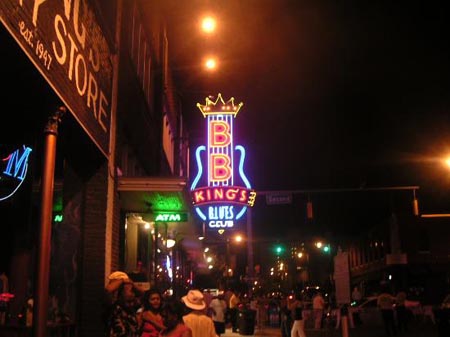
historic Beale Street entertainment district. A lively homage to the city’s musical heritage, the site includes such attractions as W. C. Handy Performing Arts Park, First Baptist Church Beale Street — the city’s oldest African-American congregation — the Stax Museum of American Soul Music, the National Civil Rights Museum and the Smithsonian Rock ‘n’ Soul Museum.
Other notable attractions include Gracelend, the Memphis Zoo at Overton Park and the Pink Palace Museum, which is the former home of the founder of Piggly-Wiggly supermarkets. The 350,000-sq. ft. Memphis Cook Convention Center is the city’s largest event venue.
 NASHVILLE
NASHVILLE
Boasting more Olympic gold medalists than any other U.S. university, Nashville’s Tennessee State University is just one of several historically Black colleges in the area. The city also is home to Meharry Medical College, American Baptist College and Fisk University, whose campus includes Jubilee Hall, the first permanent building constructed for the higher education of Africans. Other local Black heritage sites include Fort Negley — which African-American workers built and where African-Americans soldiers fought for the Union in the Battle of Nashville — and Hadley Park, created in 1912 as what is thought to be the first U.S. public park for Black citizens. Plans are in the works for the opening of the new $17 million, 70,000-sq. ft. African American Museum of Music, Art and Culture on the Bicentennial Capitol Mall.
Other notable historical and cultural attractions include the Parthenon, the only exact replica of the ancient Greek temple; Cheekwood-Tennessee Botanical Garden & Museum of Art, which is celebrating its 50th anniversary in 2010; The Hermitage, home of President Andrew Jackson; the Country Music Hall of Fame; the Frist Center for the Visual Arts; and the Adventure Science Center. In the wake of the city’s May 2010 flood, Grand Old Opry performances are being held at downtown’s Ryman Auditorium, the original home of the legendary country music venue, while the Music Valley Wax Museum and Opry Mills shopping mall are closed until further notice.
The Gaylord Opryland Resort & Convention Center Nashville is considered to be the largest non-gaming hotel property in the continental United States. It features 2,881 guestrooms, 600,000 sq. ft. of meeting and exhibit space and six ballrooms. Another space accommodating large meeting groups is downtown’s Nashville Convention Center, which offers a 118,675-sq. ft. divisible exhibit hall, an 11,000-sq. ft. ballroom and more than 13,000 sq. ft. of pre-function space. There are nearly 33,000 guestrooms in the metro area.
VIRGINIA
Travelers seeking to explore Virginia’s Black history and culture can visit sites like the African American Heritage Park in Alexandria and the Alexandria Black History Museum; the Newsome House Museum & Cultural Center, the former home of an African-American attorney and civic leader in Newport News; and the Harrison Museum of African American Culture in Roanoke, housed in the city’s first public high school for Black students.
Other notable attractions highlighting Virginia’s past include Fairfax County’s Mount Vernon, George Washington’s estate and gardens and Monticello, the Charlottesville home of Thomas Jefferson. Living history sites include Jamestown, which recreates North America’s the first permanent English settlement; York, home to the York County Historcial Museum/York Victory Center; and Colonial Williamsburg, a recreation of the colony’s 18th century capital. In Arlington’s Freedom Park, major international events in history are commemorated in artifacts such as the door from Dr. Martin Luther King, Jr.’s Birmingham jail cell and pieces of the Berlin Wall.
HAMPTON
The Boo Williams Sportsplex and the Peninsula Town Center —
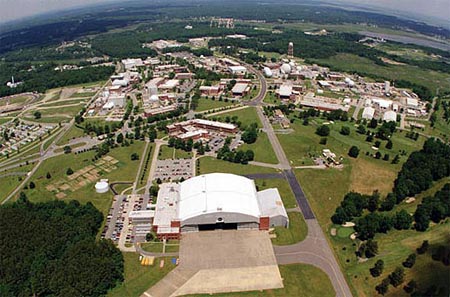
featuring shopping, dining, entertainment and outdoor activities — are just two of Hampton’s coming attractions. Crossroads Development, an ongoing $200 million the convention center area, will include a full-service hotel and 2,000-seat theater. Accommodating groups as large as 14,000, the 344,000-sq. ft. Hampton Roads Convention Center contains a 108,000-sq. ft. exhibit hall, a 28,000-sq. ft. ballroom and a 13,000-sq. ft. conference center. The facility sits next to the John Q. Hammons Embassy Suites Hotel and the Hampton Coliseum, which offer additional meeting space. There are 2,500 guestrooms within walking distance of the convention center and a total of 3,000 rooms citywide.
The historically Black Hampton University is the site of several notable cultural and historical attractions, including the Hampton Museum — Virginia’s oldest — which showcases more than 9,000 works of art; Memorial Chapel, the Booker T. Washington Memorial Garden & Statue, and Emancipation Oak. The Virginia Air & Space Center, one of the city’s biggest attractions, includes an exhibit on the Tuskegee Airmen. The Hampton History Museum, the Mariners’ Museum, the Casemate Museum at Fort Monroe and St. John’s Church, the oldest continuing English-speaking parish in the United States, offer more places to explore local history.
 NORFOLK
NORFOLK
Named in honor of the African-American Revolutionary War hero who died in the Boston Massacre, Norfolk’s Attucks Theatre serves as a venue for a variety of cultural and educational programs and group events. Another local Black heritage site, the West Point Monument in Elmwood Cemetery, honors African-Americans who fought in the Civil and Spanish-American wars. The Chrysler Museum of Art, in addition to housing one of the nation’s largest collections of Tiffany-blown glass, also has a large collection of photography chronicling the Civil Rights Movement. Like the Attucks Theatre, the museum also has event space.
Meeting groups can take advantage of the Norfolk’s Waterside Convention Connection, a local hospitality industry alliance that facilitates access to more than 1,200 hotel rooms, 55 meeting rooms and 216,000 sq. ft. of convention space. Participants include the Waterside Convention Center, the Norfolk Waterside Marriott, the Sheraton Norfolk Waterside Hotel, the Radisson Hotel Norfolk, the Waterside Festival Marketplace and Norfolk Scope, and an arena containing 85,000 sq. ft. of meeting space. The city has a total of about 5,200 guestrooms.
As the site of the world’s largest naval base, Norfolk has a strong maritime heritage. The nation’s largest battleship, the
Wisconsin, has now opened its upper deck to tour groups. The vessel is docked next to Nauticus, a maritime museum filled with lots of hands-on exhibits. A couple of local outdoor attractions have gotten recent upgrades. Town Point Park, which hosts many city events, has recently completed a major renovation, while the Virginia Zoological Park has a new Asian-themed Trail of the Tiger exhibit.
Visitors can also enjoy shopping and dining on Granby Street — considered to be the city’s “Restaurant Row” — strolling through the Norfolk Botanical Garden, touring the historic Moses Myers House and browsing the exhibits at the Norfolk History Museum at Willoughby Baylor House.
RICHMOND
Annual events like the Downhome Family Reunion in August

and the Second Street Festival in October celebrate Richmond’s African-American heritage, but you can visit several other local Black cultural and historical attractions year round. A statue of Bill “Bojangles” Robinson stands at the site of the city’s first traffic light, which was a gift from the famous film star. The landmarks are found in Jackson Ward, a 40-block historically Black neighborhood that also includes the Sixth Mount Zion Baptist Church, which was established by a former slave in 1867, and the Black History Museum and Cultural Center of Virginia. Two more points of interest are the Maggie L. Walker National Historical Site, home of the first woman bank owner in the United States, and the new Virginia Civil Rights Memorial on Capitol Square.
One of the city’s newest attractions is Richmond CenterStage, a downtown performing arts center. Fans of the visual arts can check out the new 165,000-sq. ft. expansion of the Virginia Museum of Fine Arts. The highest capacity meeting facility in Virginia’s capital city is the Greater Richmond Convention Center, with 178,159 sq. ft. of exhibit space, 80,000 sq. ft. of meeting and presentation space and a 30,550-sq. ft. ballroom.
 VIRGINIA BEACH
VIRGINIA BEACH
The Virginia Beach Convention Center recently earned LEED® Gold certification for its sustainability initiatives, which focused on recycling, waste reduction and water and energy conservation. The 516,000-sq. ft. facility offers more than 150,000 sq. ft. of column-free exhibit space, nearly 29,000 sq. ft. of meeting space and a ballroom measuring more than 31,000 sq. ft. There are over 12,000 hotel rooms citywide, including upwards of 3,500 committable hotel rooms within 2.5 miles of the convention center.
The Atlantic Coast destination has a wealth of outdoor recreational and sightseeing attractions, including 14-miles of public beach and the three-mile Virginia Boardwalk, First Landing State Park, the Back Bay National Wildlife Refuge and False Cape, which is situated between Back Bay and the Atlantic Ocean. The Virginia Legends Walk is lined with markers honoring Ella Fitzgerald, Arthur Ashe, Booker T. Washington, Thomas Jefferson, Edgar Allen Poe and other famous Virginians. Local historic landmarks include Lynnhaven House, the Cape Henry Lighthouse and the Atlantic Wildfowl Heritage Museum, housed in the last remaining cottage on the Virginia Boardwalk. Three other major attractions — the Virginia Aquarium & Marine Science Center, the Chesapeake Bay Center and the Contemporary Art Center of Virginia — offer space for after-hours events.
WEST VIRGINIA
Visitors to the Mountain

State especially enjoy its outdoor attractions, with places like the Monongahela National Forest and the Greenbrier Rivers Trail offering whitewater rafting, fishing, biking, horseback riding and a host of other activities. West Virginia’s New River/Greenbrier Valley is a haven for craft artists. Charleston boasts several Black heritage attractions, including Garnet High School; the Mattie V. Lee Home, the residence of the first Black female physician in the state; and the Samuel Starks House, home of the nation’s first Black state librarian. The capital city also is home to the Clay Center for the Arts & Sciences.
Carter G. Woodson, known as the father of Black History Month, graduated from Huntingon’s Douglas Senior High School. Other local attractions include the Huntington Museum of Art, Heritage Farm Museum & Village Camden Park — West Virginia’s only amusement park — and Harris Riverfront Park, which holds the annual Ribfest each August.
If you’re ready to start planning your own unforgettable meeting, incentive trip or vacation in the South, the state tourism offices listed here can provide lots of helpful information.
GETTING IN TOUCH
Alabama Bureau of Tourism and Travel
(800) ALABAMA
www.800alabama.com
Arkansas Department of Parks and Tourism
(800) NATURAL
www.arkansas.com
Visit Florida/Florida Tourism and Marketing Corp.
(888) 7-FLAUSA
www.visitflorida.com
Georgia Department of Industry, Trade & Tourism
(800) 847-4842
www.georgia.org/Travel
Kentucky Department of Tourism
(800) 225-8747
www.kentuckytourism.com
Louisiana Office of Tourism
(800) 677-4082
www.louisianatravel.com
Mississippi Division of Tourism Development
(866) SEE MISS
www.visitmississippi.org
North Carolina Division of Tourism
(800) VISIT NC
www.visitnc.com
South Carolina Department of parks, Recreation & Tourism
(888) SC SMILE
www.discoversouthcarolina.com
Tennessee Department of Tourism Development
(800) GO2TENN
www.tnvacation.com
Virginia Tourism Corp.
(800) VISITVA
www.virginia.org
West Virginia Division of Tourism
(800) CALL-WVA
www.wvtourism.com